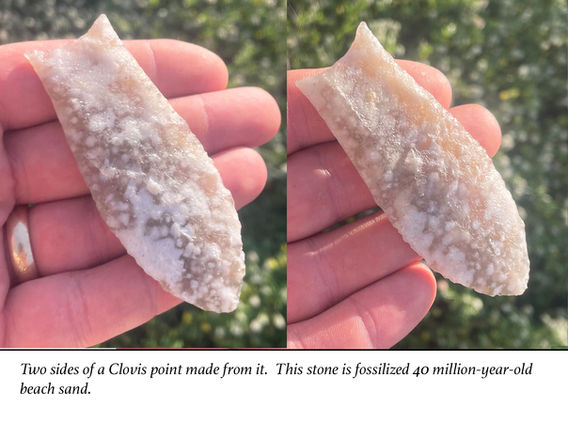Na Halupa: Pointy Things
Flintknapping - chipping sharp-edged tools from brittle, glass-like rock - is my first love in the traditional arts. My uncle got me started in it when I was in second grade- this is what brought me into culture. The first jobs I did for Choctaw Nation were teaching flintknapping classes for Tribal youth. I paid for my last semester of college tuition chipping points.
People of the past made stone projectile points (aka "arrowheads") in specific styles. More than just a pretty shape, each style comes from specific sets of tools, specific flaking techniques, and specific local kinds of stone. Each point style represents a heritage that was developed and passed down by Indigenous communities in their home areas for generations. Some of these point styles, such as Clovis, are among the deepest tangible parts of Native American traditional culture.
The creation of a chipped stone point is an artistic performance. Drawing on tradition, technical skill and aesthetic, the flintknapper puts a part of himself into every point. Unlike a music concert that vanishes on the wind, this performance is recorded in flake scars on stone that will be around for hundreds of thousands of years.
Fastened onto the ends of spears and arrows, stone points have featured prominently countless gripping human experiences - from hunting to keep loved ones fed, to fighting to protect community. Over time, the people who lived these experiences have passed on from this earth, but the stone remains to tell its part of their stories.
The core of my flintknapping work comes from the stones and flaking styles used by Choctaw ancestors in the homeland. I also do some work in the lithic traditions of the different places I've lived including the eastern/southern Plains and New Mexico. I only use traditional tools to chip stone. Most of my tools are made from wood, antler, and bone, harvested on our farm. For blog posts on specific flintwork projects at Nan Awaya Farm, please see here, here, and here.
Pecking and grinding is a second stone-working technique. It's used for shaping coarser-grained rocks to make durable tools, like axe heads. The first formal class that I ever taught was a pecking and grinding session at a traditional skills event when I was 17.
Use the right arrow on the image below to peruse some of my stone work through the years. Double click if you're browsing on a cell phone.






























